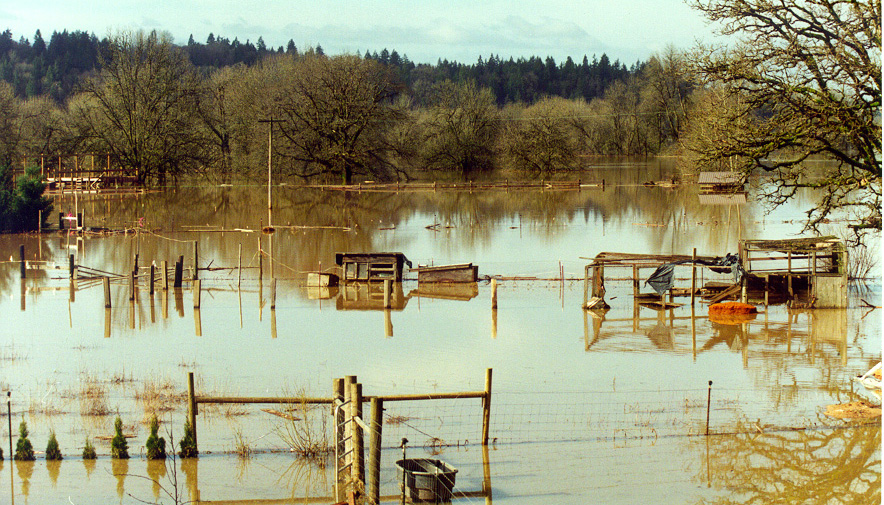Flooding near La Center, February 1996
The National Flood Insurance Program was created by Congress in 1968 to make flood insurance available to property owners in flood-prone communities. The federal program requires local governments to adopt and enforce flood plain regulations before their residents can purchase flood insurance.
Following the purchase of flood insurance, there is a 30-day waiting period before coverage begins. For this reason, residents should purchase flood insurance before the onset of the rainy season to ensure coverage during a flood.
Flood insurance rate maps available
Flood insurance rate maps, prepared by the Federal Emergency Management Agency, identify flood hazard zones in Clark County, including “base flood” areas that have a 1% chance of being inundated in any year.
The maps will indicate properties where mortgage lenders may require flood insurance and where flood plain development regulations may apply. Property owners are encouraged to examine the maps because some land may have been added to flood hazard zones, resulting in new insurance requirements and development restrictions.
Flood insurance rate maps for Clark County
FEMA mailed Clark County a Letter of Final Determination for the final maps on March 5, 2012. The maps and related flood study for Clark County took effect on Sept. 5, 2012. In addition, flood insurance rate maps for properties along the Washougal River, along the Little Washougal River and behind the Port of Camas-Washougal’s levee on the Columbia River took effect on Jan. 19, 2018.
For more information, contact Melissa Tracy, Planning Technician II, at 564.397.5843 or melissa.tracy@clark.wa.gov.
Types of insurance coverage
The National Flood Insurance Program insures buildings with two types of coverage: structural and contents.
- Structural coverage - Includes walls, floors, insulation, furnace and other items permanently attached to the structure
- Contents coverage - Purchased separately to cover the contents of an insurable building
Flood insurance also pays a portion of the costs of actions taken to prevent flood damage.
More information
For information about county floodplain and floodway zone maps, go to FEMA's Flood Map Service.
You also can contact your homeowner’s insurance agent for more information on the National Flood Insurance Program or call the National Flood Insurance Program at 888.379.9531.
